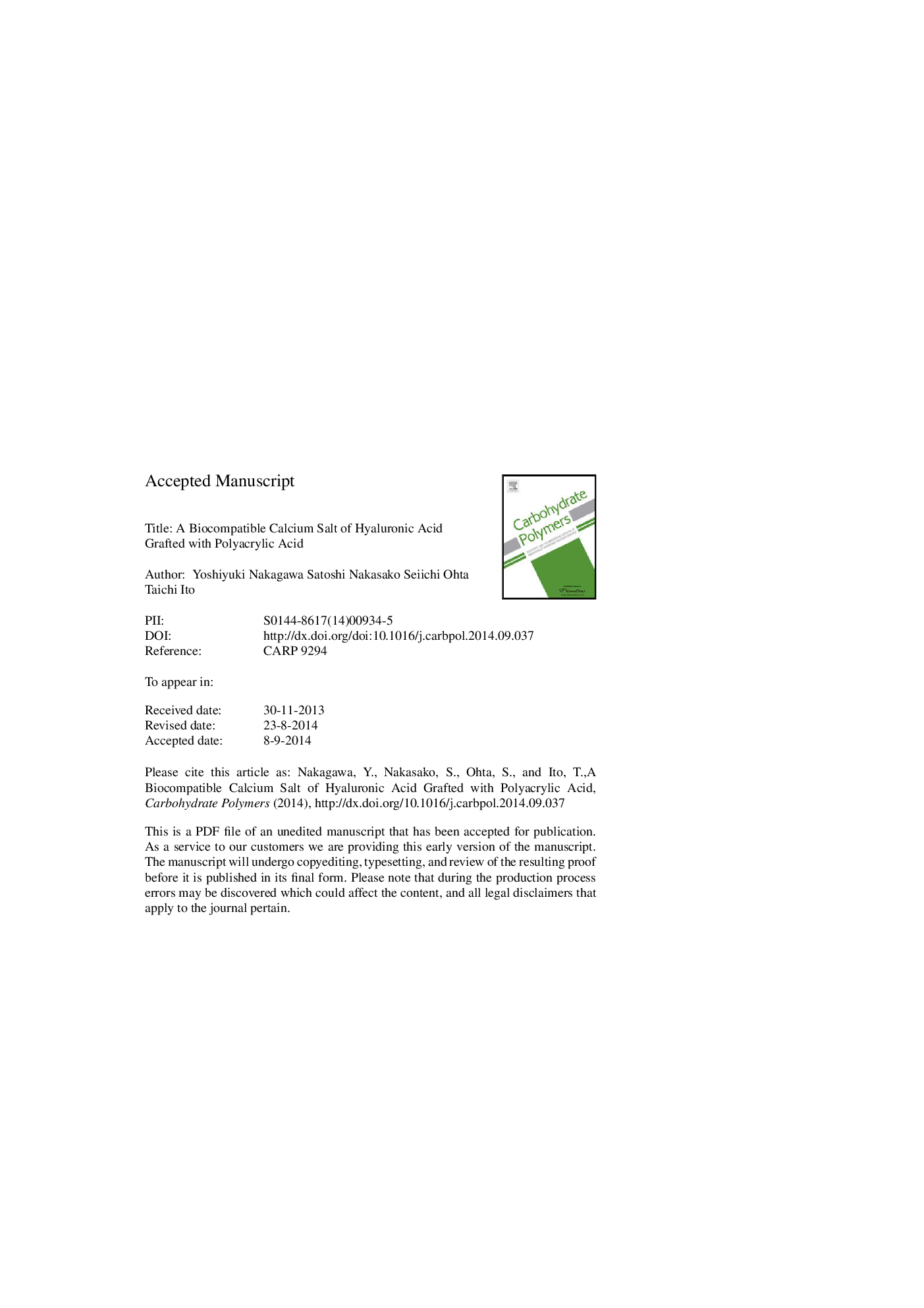| Article ID | Journal | Published Year | Pages | File Type |
|---|---|---|---|---|
| 7789427 | Carbohydrate Polymers | 2015 | 37 Pages |
Abstract
We have synthesized hyaluronic acid (HA) grafted with polyacrylic acid (PAA) via controlled radical polymerization (CRP) in aqueous media. The grafted HA (HA-g-PAA) showed slow degradation by hyaluronidase compared with unmodified HA as a result of the steric hindrance produced by grafted PAA, and PAA was detached by hydrolysis and enzymatic degradation by lipase. It formed an insoluble salt immediately after mixing with Ca2+ by the binding between grafted PAA and Ca2+. Both HA-g-PAA and its salt showed good biocompatibility, especially to mesothelial cells in vitro. Finally, they were administered into mice subcutaneously and intraperitoneally. The residue of the material was observed 7 days after subcutaneous administration, while the material was almost cleared from the peritoneum 7 days after intraperitoneal administration with or without Ca2+. HA-g-PAA is expected to be applicable to medical uses such as drug delivery in the peritoneum and for materials preventing peritoneal adhesion.
Keywords
Related Topics
Physical Sciences and Engineering
Chemistry
Organic Chemistry
Authors
Yoshiyuki Nakagawa, Satoshi Nakasako, Seiichi Ohta, Taichi Ito,
